Fine Antique Japanese Netsuke Mask Mennetsuke Shishiguchi Signed Shugetsu Saku
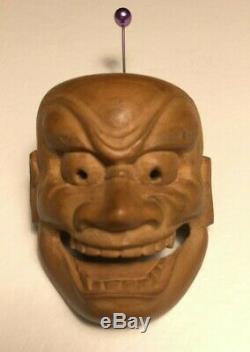
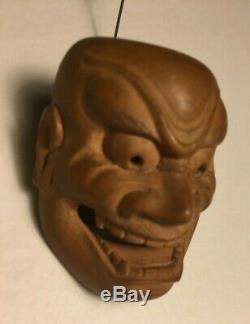
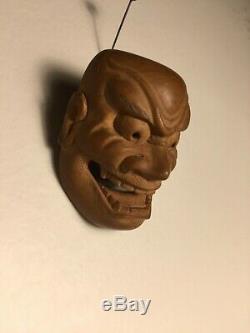
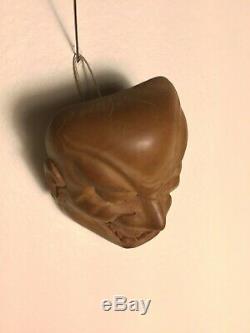
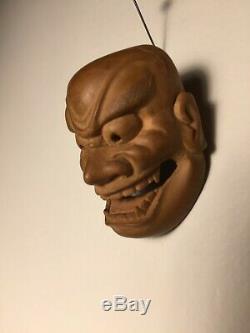
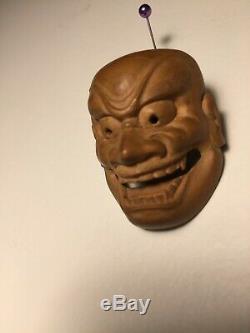


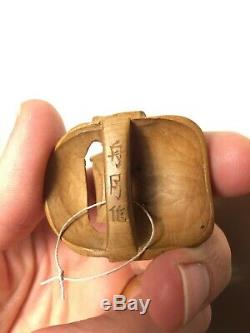
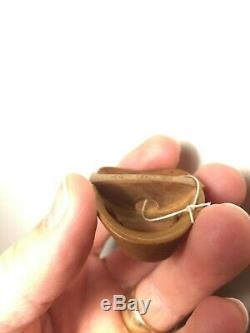
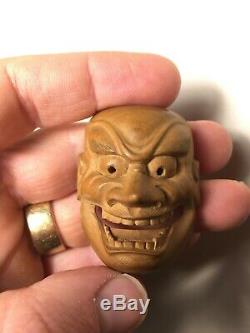

19th century boxwood netsuke of Shishiguchi. A mask representing a type of lion. Like a roaring lion, shishiguchi has a squarely open mouth displaying metallic gold teeth, fangs, and large red tongue.
Between the metallic gold eyes that peer majestically out from beneath strong, thick eyebrows rests a wide, flat nose. Gold-colored shishiguchi are sometimes called dei-shishiguchi to distinguish them from the less common, red-colored shishiguchi. Kanze-style shishi masks tend to have bare heads and large fangs, but Hsh shishi have a black line across the top of their foreheads, which in human masks would indicate the base of a black lacquer hat (kanmuri) and are thus known as kanmurigata shishi. A fine 16th century example belongs to the Tokugawa Art Museum, Nagoya.
While many shishi masks of Chinese origin can be found in the dengaku and gigaku repetoires, the various shishiguchi masks are Japanese in origin. Used for the second act of the play Shakky. (Stone Bridge) for the role of the father lion who dances boisterously among the peony flowers in Monju Bodhisattva's paradise.
Sometimes, one or more child shishi wearing a shikami. Mask or a smaller version of shishi known as kojishi. (child lion), accompanies the father. A Muromachi period example of the child shishi with menacing up-turned eyes belongs to the Hshkai, Tokyo and is designated an Important Cultural Property.
The item "Fine Antique Japanese Netsuke Mask Mennetsuke Shishiguchi Signed Shugetsu Saku" is in sale since Thursday, February 14, 2019. This item is in the category "Antiques\Asian Antiques\Japan\Netsuke". The seller is "maskmonger" and is located in Freeport, Maine. This item can be shipped worldwide.- Type: netsuke
- Region of Origin: Japan
- Age: 1850-1899
- Primary Material: Wood
- Maker: Shugetsu Saku
- Original/Reproduction: Antique Original
- Color: Brown

